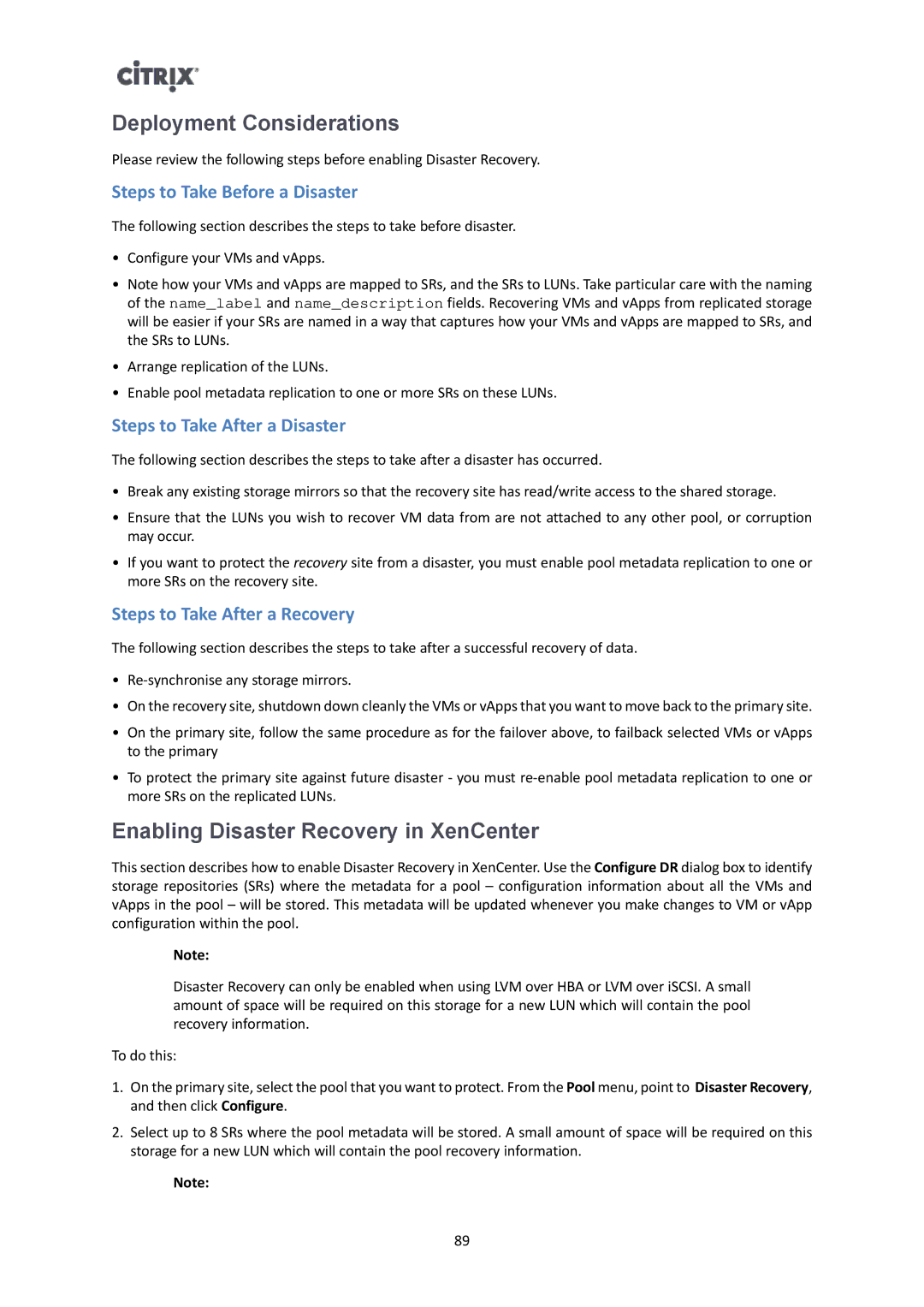Deployment Considerations
Please review the following steps before enabling Disaster Recovery.
Steps to Take Before a Disaster
The following section describes the steps to take before disaster.
•Configure your VMs and vApps.
•Note how your VMs and vApps are mapped to SRs, and the SRs to LUNs. Take particular care with the naming of the name_label and name_description fields. Recovering VMs and vApps from replicated storage will be easier if your SRs are named in a way that captures how your VMs and vApps are mapped to SRs, and the SRs to LUNs.
•Arrange replication of the LUNs.
•Enable pool metadata replication to one or more SRs on these LUNs.
Steps to Take After a Disaster
The following section describes the steps to take after a disaster has occurred.
•Break any existing storage mirrors so that the recovery site has read/write access to the shared storage.
•Ensure that the LUNs you wish to recover VM data from are not attached to any other pool, or corruption may occur.
•If you want to protect the recovery site from a disaster, you must enable pool metadata replication to one or more SRs on the recovery site.
Steps to Take After a Recovery
The following section describes the steps to take after a successful recovery of data.
•
•On the recovery site, shutdown down cleanly the VMs or vApps that you want to move back to the primary site.
•On the primary site, follow the same procedure as for the failover above, to failback selected VMs or vApps to the primary
•To protect the primary site against future disaster - you must
Enabling Disaster Recovery in XenCenter
This section describes how to enable Disaster Recovery in XenCenter. Use the Configure DR dialog box to identify storage repositories (SRs) where the metadata for a pool – configuration information about all the VMs and vApps in the pool – will be stored. This metadata will be updated whenever you make changes to VM or vApp configuration within the pool.
Note:
Disaster Recovery can only be enabled when using LVM over HBA or LVM over iSCSI. A small amount of space will be required on this storage for a new LUN which will contain the pool recovery information.
To do this:
1.On the primary site, select the pool that you want to protect. From the Pool menu, point to Disaster Recovery, and then click Configure.
2.Select up to 8 SRs where the pool metadata will be stored. A small amount of space will be required on this storage for a new LUN which will contain the pool recovery information.
Note:
89
